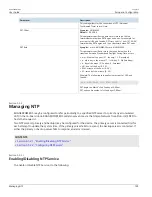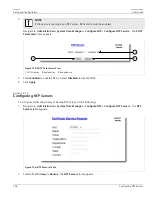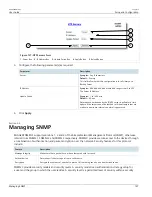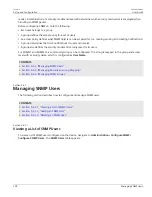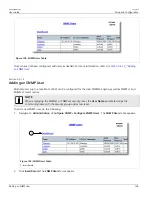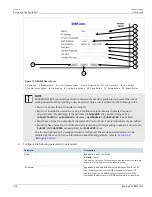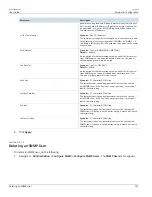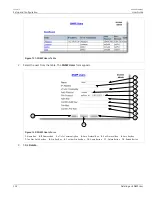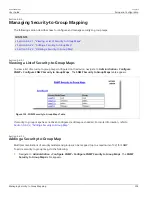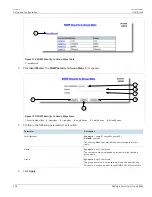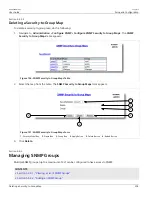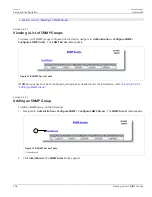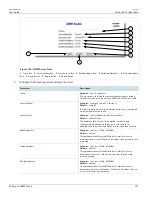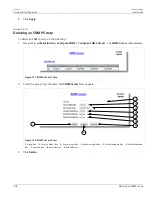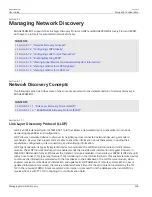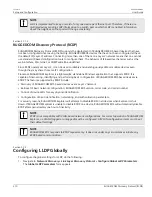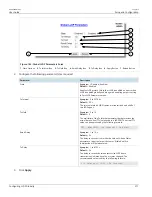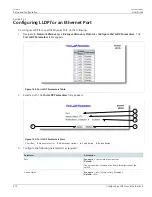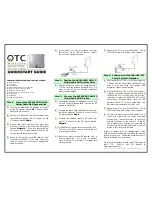
RUGGEDCOM ROS
User Guide
Chapter 5
Setup and Configuration
Managing Network Discovery
209
Section 5.7
Managing Network Discovery
RUGGEDCOM ROS supports the Link Layer Discovery Protocol (LLDP) and RUGGEDCOM Discovery Protocol (RCDP),
both Layer 2 protocols for automated network discovery.
CONTENTS
•
Section 5.7.1, “Network Discovery Concepts”
•
Section 5.7.2, “Configuring LLDP Globally”
•
Section 5.7.3, “Configuring LLDP for an Ethernet Port”
•
Section 5.7.4, “Enabling/Disabling RCDP”
•
Section 5.7.5, “Viewing Global Statistics and Advertised System Information”
•
Section 5.7.6, “Viewing Statistics for LLDP Neighbors”
•
Section 5.7.7, “Viewing Statistics for LLDP Ports”
Section 5.7.1
Network Discovery Concepts
The following section describes some of the concepts important to the implementation of network discovery in
RUGGEDCOM ROS.
CONTENTS
•
Section 5.7.1.1, “Link Layer Discovery Protocol (LLDP)”
•
Section 5.7.1.2, “ RUGGEDCOM Discovery Protocol (RCDP)”
Section 5.7.1.1
Link Layer Discovery Protocol (LLDP)
LLDP is an IEEE standard protocol, IEEE 802.11AB, that allows a networked device to advertise its own basic
networking capabilities and configuration.
LLDP allows a networked device to discover its neighbors across connected network links using a standard
mechanism. Devices that support LLDP are able to advertise information about themselves, including their
capabilities, configuration, interconnections, and identifying information.
LLDP agent operation is typically implemented as two modules: the LLDP transmit module and LLDP receive
module. The LLDP transmit module, when enabled, sends the local device’s information at regular intervals, in
IEEE 802.1AB standard format. Whenever the transmit module is disabled, it transmits an LLDPDU (LLDP data unit)
with a time-to-live (TTL) type-length-value (TLV) containing 0 in the information field. This enables remote devices
to remove the information associated with the local device in their databases. The LLDP receive module, when
enabled, receives remote devices’ information and updates its LLDP database of remote systems. When new or
updated information is received, the receive module initiates a timer for the valid duration indicated by the TTL
TLV in the received LLDPDU. A remote system’s information is removed from the database when an LLDPDU is
received from it with TTL TLV containing 0 in its information field.

